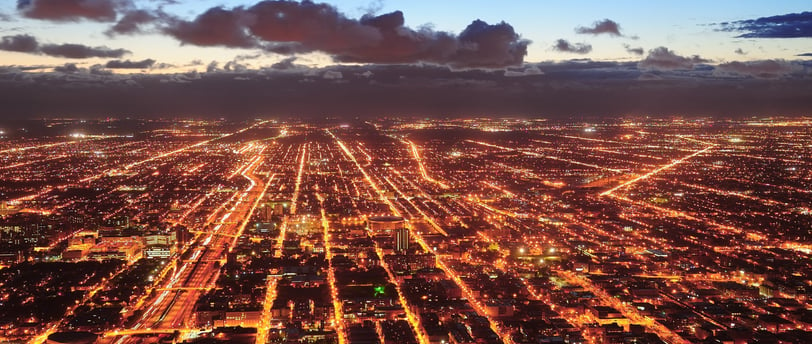Urban Heat Islands: How Cities Can Stay Cool in the Face of Rising Temperatures
CLIMATE


As global temperatures climb, cities face an intensified version of the heatwave problem: the urban heat island (UHI) effect. This phenomenon causes urban areas to be significantly warmer than their rural surroundings due to dense infrastructure, reduced vegetation, and human activities. The UHI effect not only increases energy demands for cooling but also poses serious health risks, particularly for vulnerable populations.
To combat this challenge, urban planners and policymakers are exploring innovative strategies to cool cities and make them more resilient to rising temperatures.
What Causes Urban Heat Islands?
The UHI effect stems from several interrelated factors:
Dense Infrastructure
Asphalt, concrete, and other materials absorb and retain heat, releasing it slowly into the atmosphere, especially at night.
Tall buildings and narrow streets trap heat and limit airflow, creating "urban canyons."
Lack of Vegetation
Trees and green spaces, which provide shade and cooling through evapotranspiration, are often scarce in urban areas.
Replacing natural landscapes with impermeable surfaces exacerbates heat retention.
Human Activity
Vehicles, air conditioning units, and industrial processes release heat and greenhouse gases, further warming urban areas.
Climate Change
Rising global temperatures amplify the UHI effect, leading to longer and more intense heatwaves.
The Impacts of Urban Heat Islands
1. Increased Energy Consumption
Higher temperatures drive up the demand for air conditioning, straining energy grids and increasing carbon emissions.
2. Health Risks
Heat-related illnesses, such as heatstroke and dehydration, disproportionately affect children, the elderly, and individuals with pre-existing health conditions.
Poor air quality in hotter cities exacerbates respiratory issues.
3. Environmental Degradation
Warmer cities contribute to poor water quality as heated runoff enters rivers and lakes.
Biodiversity declines in urban areas with extreme temperatures.
4. Economic Costs
Rising energy bills, healthcare costs, and infrastructure maintenance place a financial burden on cities and residents.
Strategies to Combat Urban Heat Islands
Urban planners and environmentalists are employing a variety of strategies to mitigate the UHI effect and create cooler, more livable cities.
1. Increasing Urban Green Spaces
Parks and Green Roofs: Expanding urban greenery reduces heat absorption and provides cooling benefits through evapotranspiration.
Example: Singapore’s “Garden City” initiative integrates greenery into buildings and infrastructure.
2. Implementing Cool Roofs and Pavements
Cool Roofs: Coating rooftops with reflective materials or planting vegetation reduces heat absorption.
Cool Pavements: Using reflective or porous materials minimizes heat retention and improves stormwater drainage.
Example: Los Angeles has implemented cool pavement projects to lower surface temperatures.
3. Promoting Urban Forestry
Planting trees along streets and in neighborhoods provides shade, reduces surface temperatures, and improves air quality.
Example: Melbourne’s Urban Forest Strategy aims to increase tree canopy cover to 40% by 2040.
4. Encouraging Sustainable Building Design
Passive Cooling: Designing buildings to optimize natural ventilation and shading reduces reliance on air conditioning.
Energy-Efficient Standards: Incorporating insulation and smart technologies minimizes energy use.
5. Developing Water Features
Urban water bodies, fountains, and misting systems help cool surrounding areas through evaporative cooling.
Example: Copenhagen’s Harbor Baths provide cooling and recreational opportunities.
6. Enhancing Urban Planning
Designing cities with wider streets and building layouts that promote airflow reduces trapped heat.
Mixed-use development minimizes energy-intensive commutes and promotes walkability.
Case Studies in Cooling Cities
1. New York City’s Cool Roof Program
New York’s initiative involves coating rooftops with reflective materials, reducing indoor temperatures and energy use. Since its inception, the program has cooled millions of square feet of rooftop space.
2. Tokyo’s Green Building Regulations
Tokyo requires new developments to include green roofs or walls, helping to combat its UHI effect while improving air quality.
3. Ahmedabad’s Heat Action Plan
In India, Ahmedabad has implemented strategies such as reflective roofs, early warning systems, and public awareness campaigns to protect its population from extreme heat.
The Role of Technology in Urban Cooling
1. Climate Modeling
Advanced simulations predict the impact of cooling strategies on urban temperatures, aiding planners in decision-making.
2. Smart Sensors
IoT devices monitor temperature and humidity levels in real-time, helping cities identify heat hotspots and deploy resources effectively.
3. AI and Machine Learning
Algorithms analyze data to recommend optimal locations for green spaces, cool roofs, or other interventions.
Challenges in Implementing UHI Solutions
Despite the promising solutions, cities face several obstacles:
Funding Constraints: Cooling strategies, particularly large-scale green infrastructure projects, require significant investment.
Equity Concerns: Vulnerable communities often lack access to cooling resources and infrastructure.
Maintenance Issues: Green roofs, urban trees, and water features need ongoing care to remain effective.
The Future of Cool Cities
As cities continue to grow, combating the urban heat island effect will be critical to ensuring their sustainability and livability. Emerging trends, such as integrating renewable energy with cooling systems and creating multifunctional urban spaces, offer hope for a cooler urban future.
Collaboration between policymakers, urban planners, and communities will be essential to implementing effective solutions that balance environmental, economic, and social needs.
Conclusion
The urban heat island effect is a significant challenge in the era of climate change, but it is not insurmountable. Through innovative urban design, technological advancements, and community involvement, cities can stay cool and resilient in the face of rising temperatures.
By prioritizing sustainable and equitable solutions, urban planners can create environments where residents thrive—even during the hottest summers.

